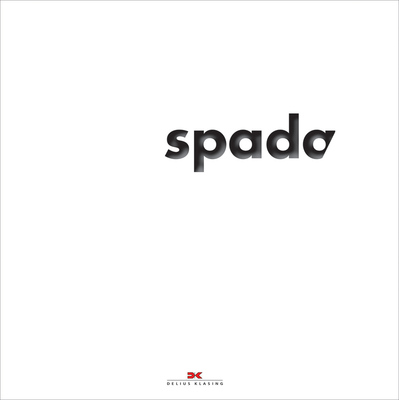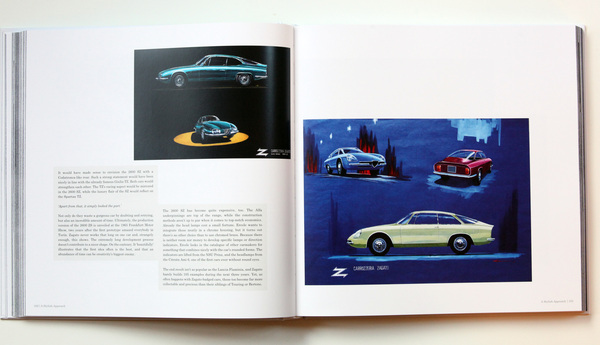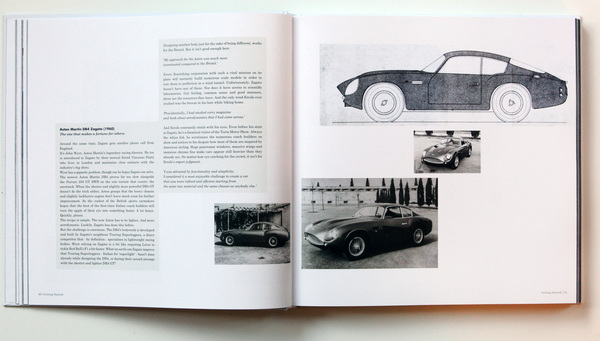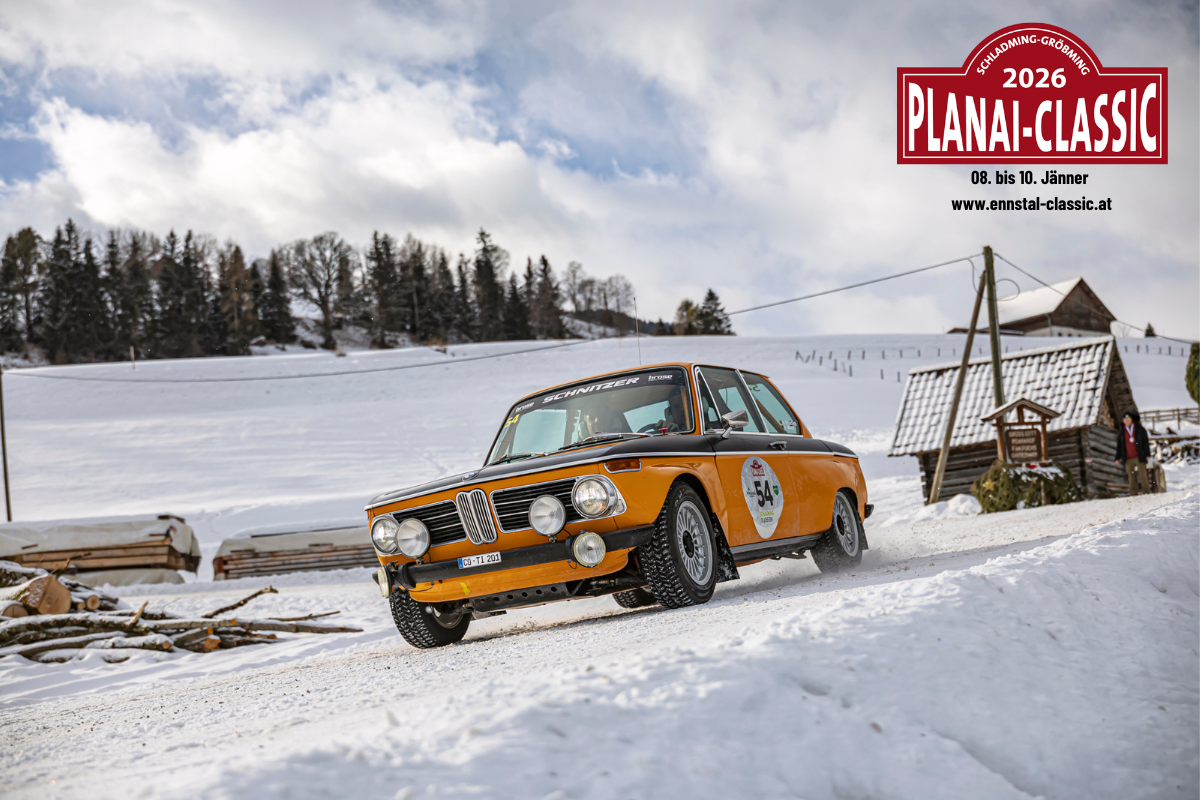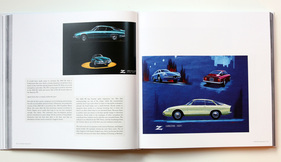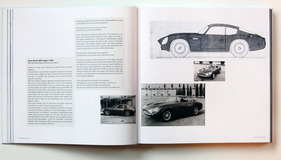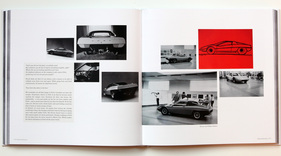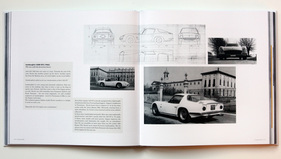Ercole Spada is responsible for the design of well over 40 cars, including such well-known vehicles as the Aston Martin DB4 Zagato, the Alfa Romeo Giulia Tubolare Zagato (TZ1, TZ2), the BMW Siebner E32 and the Alfa Romeo 155. And yet even the drivers of these cars often don't know him. He liked to stay in the background and is not a tabloid star.

A book for a master of his trade
It's a good thing that motoring journalist Bart Lenaerts and his wife Lies De Mol found the confidence of this exceptional talent and compiled the results of countless conversations into a book worth reading. The 302-page book in English is illustrated with 350 photos and, above all, drawings and, as a bonus, there is also an A0-sized poster with a facsimile of the construction drawings for the Alfa Romeo TZ1.
The career
Spada was already drawing cars as a child, developing above-average drawing skills at an early age. There were no specialized schools to develop this talent. So he took technical courses where he learned the essence of construction plans, which had nothing to do with cars. He was still interested in cars, but could not even afford the coveted automobile magazines of the time.
During his military service, he followed the local races and the names Alfa Romeo, Abarth and Zagato kept catching his eye. Spada applied to precisely these three companies and Elio Zagato was the quickest to reply. In fact, these three letters of application were the first and only ones that Spada ever wrote, and at the same time Spada was also the first person to ever apply for a job at Zagato with a letter of application.
Elio hires Ercole and thus has a designer on the payroll for the first time in history!

And so begins a career as a designer that is later continued at companies such as GHIA, IDEA, Ford, Audi and BMW. Each station is given due space in the book, parallel to the description of the work on the cars of that era
The cars
Bristol 406 GT Zagato (1960), Aston Martin DB 4 GT Zagato (1960), Osca 1600 GT (1960), Alfa Romeo Giulietta Codatronca (1961), Lancia Appia Sport (1961), BMC Mini-Cat (1961), Bristol 407 GT Zagato (1961), Lancia Flavia Sport (1962), Alfa Romeo 2600 SZ prototipo (1962), Alfa Romeo TZ Spider prototipo (1962), Alfa Romeo TZ 1 (1963), Lancia Flavia Prototipo Sport Corsa (1964), Alfa Romeo TZ 2 (1964), Hillman Zimp (1964), Fiat 850 Zagato (1964), Lancia Flaminia Super Sport (1964), Alfa Romeo 2600 SZ Production (1965), Lancia Fulvia Sport Zagato (1965), Alfa Romeo Gran Sport Quattroruote (1965), Lamborghini 3500 GTZ (1965), 21. Bikini (1965), Osca MV 1700 Berlinetta (1965), Osca MV 1700 Convertible (1965), Lancia Flavia Super Sport (1965), Rover 2000 TCZ (1967), Fiat 125 GTZ (1967), Lancia Fulvia Spider (1968), Alfa Romeo Junior Zagato (1969), volvo 142 GTZ (1969), Zanzara (1969; Ford GT 70 (1971), Iso Varedo (1972), Ford Mustang (1979), BMW E32 Siebner (1986), BMW E34 Fünfer (1988), Fiat Tipo (1988), Ferrari PPG (1988), Fiat Tempra (1990), Fiat Tempra Kombi (1990), Lancia Dedra (1990), Lancia Dedra Kombi (1991), Alfa Romeo 155 (1992), Lancia Delta (1993), Nissan Terrano (1993), Daihatsu Move (1995), Ferrari FZ 93 Zagato (1993), Osca Dromos (1998), Spada Codatronca (2008) - the cars that Ercole Spada drew and designed. They are all given space in the book and, wherever possible, sketches and the finished car are shown, but above all Spada's thoughts and ideas are reproduced.
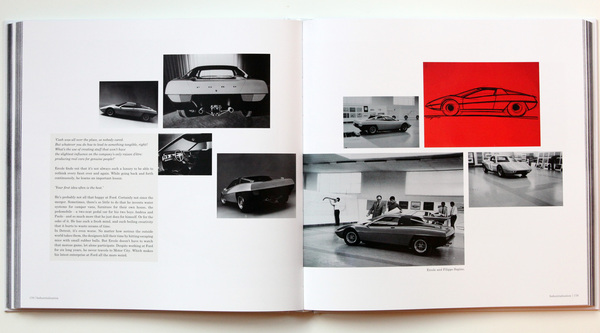
The stories and memories
Along the story, the book is largely chronological, many anecdotes and side stories are told, such as the memory of when they did road tests with the Alfa with the cut-off rear (Codatronca) to improve the aerodynamics. The speed was calculated along the kilometer markers and when Spada read 16 seconds off the stopwatch, he thought he had made a mistake. But the measurement could be verified on the next kilometer, the change to the vehicle had actually resulted in a 20 km/h higher top speed.
Not a picture book
Although the magnificent volume in the square format of almost 30 x 30 centimeters is illustrated with many pictures, it is not a picture book, but rather a biography and a reader. Of course, the predominantly historical photos and the excellently reproduced drawings also speak a clear language, but they only become really valuable with the accompanying text. The book is therefore aimed more at people who speak English and can follow Spada's thoughts on the designs.
For design enthusiasts, however, the book is definitely an absolute must and for people who have one of Spada's more than 40 creations in their garage anyway.
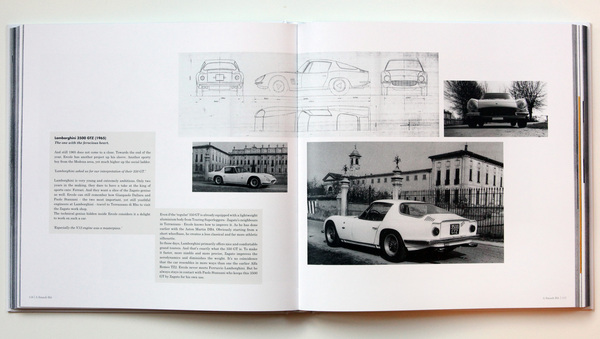
At Euro 98.00, this beautifully made and plain white work is not cheap, but definitely worth the money. And what does it say on the back? "A long story of a short tail" ( A long story of a short tail).
Bibliographical information
- Title: Spada
- Authors: Bart Lenaerts and Lies Del Mol
- Language: English
- Publisher: Delius Klasing
- Edition: 1st edition 2014
- Size/format: 302 pages, 350 photos and drawings, size 29.5 x 29.7 cm, hardcover
- ISBN-10: 3768838749
- ISBN-13: 978-3768838740
- Price: Euro 98.00
- Order/buy: At amazon.de
, at the publisher Delius-Klasing or in the relevant bookstores

